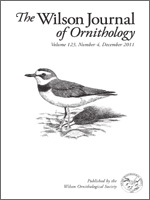We describe a weather-durable cavity design used successfully by cavity-nesting species native to the eastern USA and, although accessible, avoided by European Starlings (Sturnus vulgaris). The artificial nest cavity was constructed using 9.5-cm inside diameter polyvinyl chloride tubes cut to 27.5-cm lengths. The tubes were mounted horizontally with 5.1-cm entry holes drilled through one of the capped ends. Eastern Bluebirds (Sialia sialis), House Wrens (Troglodytes aedon), and Tree Swallows (Tachycineta bicolor) nested in 49 of 100, newly mounted tubes on utility poles in north-central Ohio, USA from April through June 2009. These species nested in 85% of the tubes during the same period in 2010 and fledged young from 94.1% of nests. We added 10 nest tubes (27.5-cm long × 17-cm inside diam) at sites similar to the smaller tubes in 2010. Two of the larger tubes were used by nesting starlings and six by native species. Cavity vertical depth has been shown to be an important feature in starling nest site selection, but our data from the larger tubes indicate that other factors are likely important. The smaller design could offer nesting opportunities for a range of native cavity-nesting species while limiting use by starlings.
How to translate text using browser tools
1 December 2011
Artificial Nest Cavity Used Successfully By Native Species and Avoided by European Starlings
Laura A. Tyson,
Bradley F. Blackwell,
Thomas W. Seamans
ACCESS THE FULL ARTICLE





